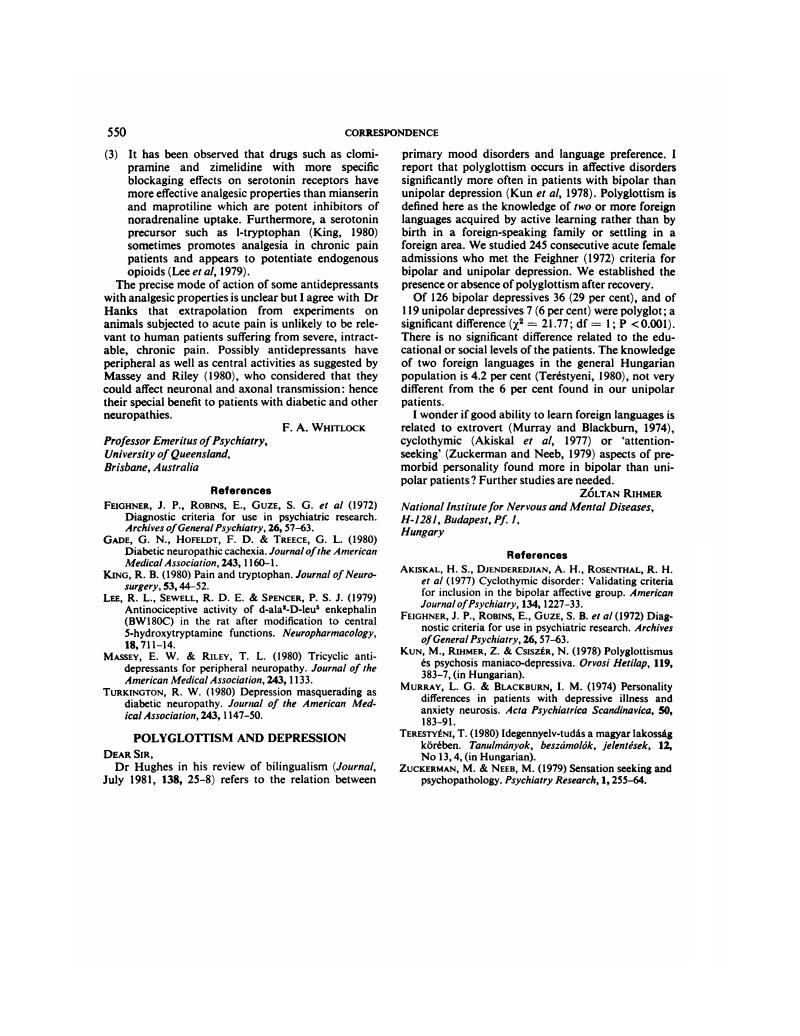Crossref Citations
This article has been cited by the following publications. This list is generated based on data provided by Crossref.
De Zulueta, F. I. S.
1984.
The implications of bilingualism in the study and treatment of psychiatric disorders: a review.
Psychological Medicine,
Vol. 14,
Issue. 3,
p.
541.
Akiskal, Hagop S.
2005.
Searching for behavioral indicators of bipolar II in patients presenting with major depressive episodes: the “red sign,” the “rule of three” and other biographic signs of temperamental extravagance, activation and hypomania.
Journal of Affective Disorders,
Vol. 84,
Issue. 2-3,
p.
279.
Lara, Diogo R.
Bisol, Luísa W.
Ottoni, Gustavo L.
de Carvalho, Hudson W.
Banerjee, Dipavo
Golshan, Shahrokh
Akiskal, Kareen
and
Akiskal, Hagop S.
2015.
Validation of the “rule of three”, the “red sign” and temperament as behavioral markers of bipolar spectrum disorders in a large sample.
Journal of Affective Disorders,
Vol. 183,
Issue. ,
p.
195.




eLetters
No eLetters have been published for this article.